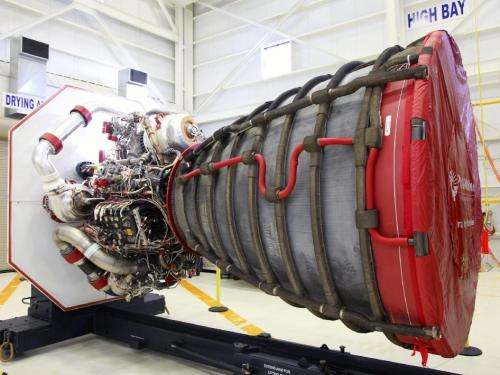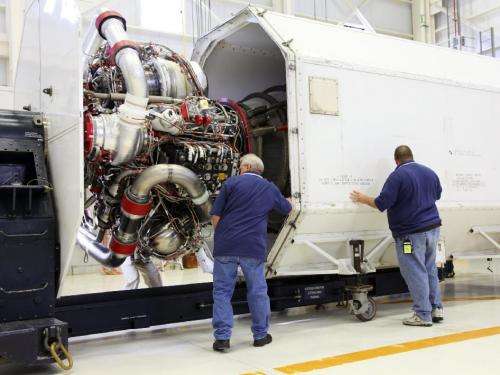NASA moves shuttle engines from Kennedy to Stennis

(PhysOrg.com) -- The relocation of the RS-25D space shuttle main engine inventory from Kennedy Space Center's Engine Shop in Cape Canaveral, Fla., is underway. The RS-25D flight engines, repurposed for NASA's Space Launch System, are being moved to NASA's Stennis Space Center in south Mississippi.
The Space Launch System (SLS) is a new heavy-lift launch vehicle that will expand human presence beyond low-Earth orbit and enable new missions of exploration across the solar system. The Marshall Space Flight Center in Huntsville, Ala., is leading the design and development of the SLS for NASA, including the engine testing program. SLS will carry the Orion spacecraft, its crew, cargo, equipment and science experiments to destinations in deep space.
"The relocation of RS-25D engine assets represents a significant cost savings to the SLS Program by consolidating SLS engine assembly and test operations at a single facility," said William Gerstenmaier, NASA’s Associate Administrator for Human Exploration and Operations Mission Directorate.

The RS-25Ds -- to be used for the SLS core stage -- will be stored at Stennis until testing begins at a future date. Testing is already under way on the J-2X engine, which is planned for use in the SLS upper stage. Using the same fuel system -- liquid hydrogen and liquid oxygen -- for both core and upper stages reduces costs by leveraging the existing knowledge base, skills, infrastructure and personnel.
"This enables the sharing of personnel, resources and practices across all engine projects, allows flexibility and responsiveness to the SLS program, and it is more affordable," said Johnny Heflin, RS-25D core stage engine lead in the SLS Liquid Engines Office at Marshall. "It also frees up the space, allowing Kennedy to move forward relative to commercial customers."
The 15 RS-25D engines at Kennedy are being transported on the 700-mile journey using existing transportation and processing procedures that were used to move engines between Kennedy and Stennis during the Space Shuttle Program. They will be relocated one at time by truck.
Built by Pratt & Whitney Rocketdyne of Canoga Park, Calif. the RS-25D engine powered NASA’s space shuttle program with 100 percent mission success.
Provided by JPL/NASA



















